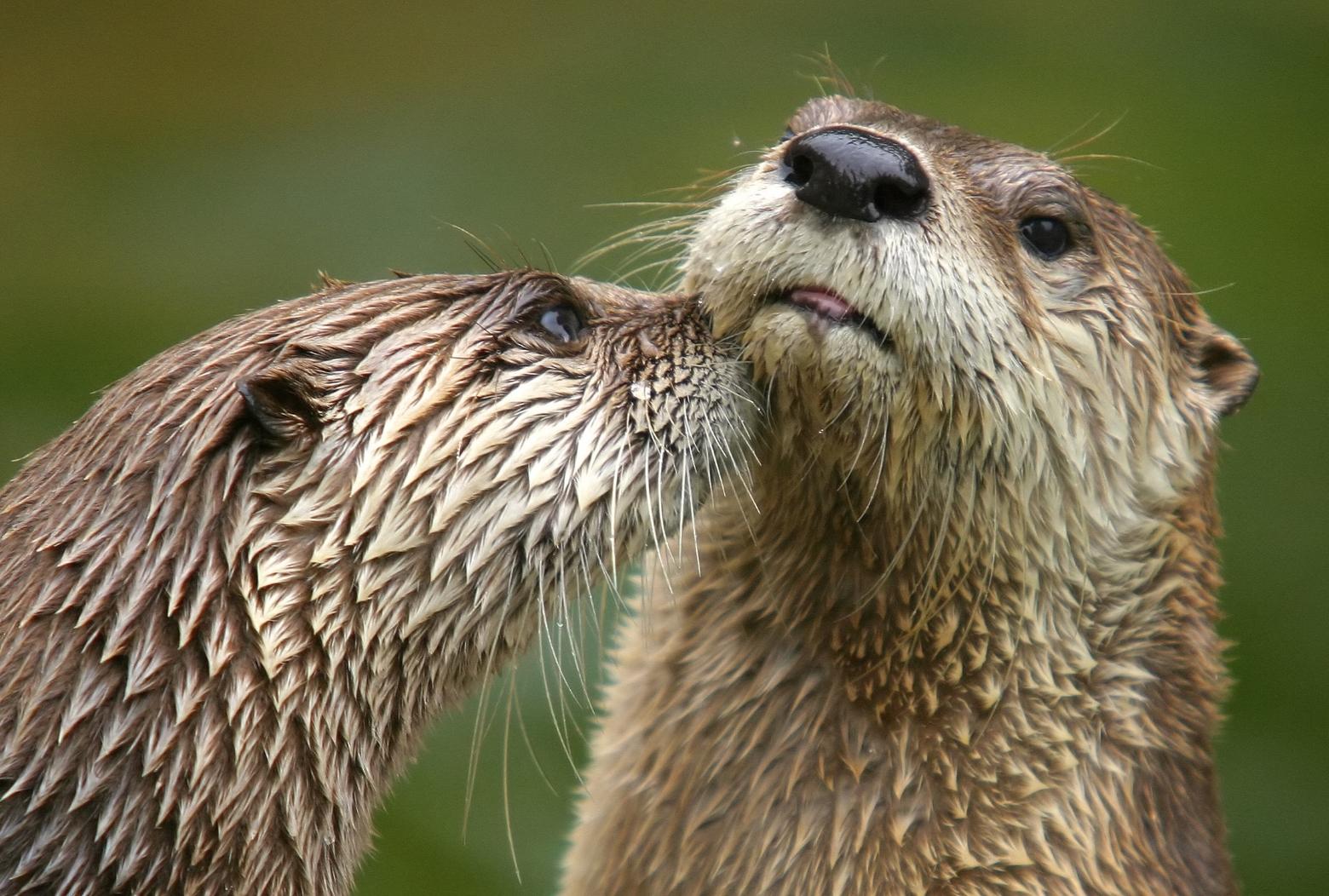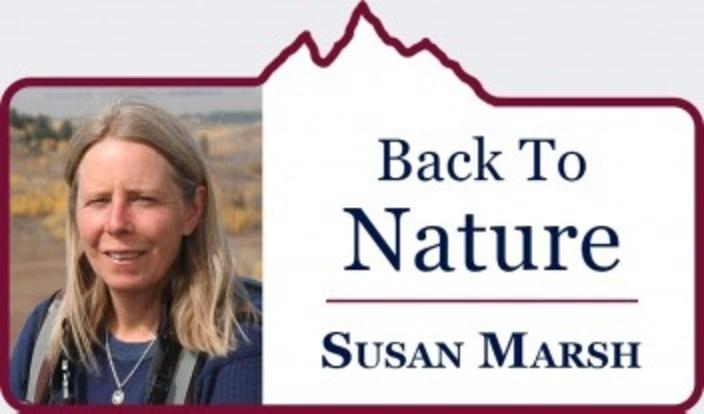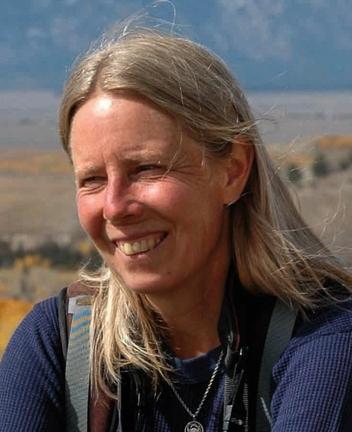Back to StoriesThe Story Of A River Otter Found Dead In A Snare
MoJo is committed to giving you great reads that take a lot of time to produce. In turn, we rely on your generosity. We are a non-profit public-interest journalism site and, like public radio and television, we depend on you to keep us going and expand our coverage. Please click here to vote your values by supporting Mountain Journal.
January 15, 2018
The Story Of A River Otter Found Dead In A SnareNaturalist Susan Marsh Says It Is Time That Society Had An Adult Conversation About The Impact Of Fur Trapping
In early December I found a river
otter caught in a snare. I wondered how I knew to find her. Was I guided by a
thread I could not see as I bent to photograph starry ice crystals and trapped
bubbles frozen in the ice of a beaver pond?
Were the bubbles her last breaths?
I could have easily missed her,
taking my usual route around the ponds where the lighting and backdrop is best
for photography. I could have found another sand path to the river. But the invisible
thread connecting us led me to the place where she lay.
The animals are calling. When will
we listen? The otter called me to witness her silky coat now dried and sprinkled
with sand, tufts of fur pulled free in her struggle among the willows. The sole
of her hind foot, turned in supplication toward the sky, her face turned away
as if she didn’t want to see. But she wanted me to see.
The snare around her neck was not
meant for her, it was laid to catch the beavers who had worked all season on a
magnificent pair of dams, who wintered in a newly decorated lodge with a supply
of cottonwood twigs nearby to feed the kits. Chorus frogs and puddle ducks
would come in the spring. Herons would follow, and eagles from the river. The beavers were the architects of a half-acre
ecosystem.
"The snare around her neck was not meant for her, it was laid to catch the beavers who had worked all season on a magnificent pair of dams, who wintered in a newly decorated lodge with a supply of cottonwood twigs nearby to feed the kits."
The animals are calling. When will
we respond? Oh sweetheart, I said to the carcass. I’m so sorry. A small sad
prayer, a pang of grief, a tear withheld in favor of words and worry about my
dog. It was easier to yell at Maya to stick close as I marched away than to
feel the depth of my sorrow.
Witness, the otter said, and tell my
story. I told my friends what I had found. I composed a letter to the editor. I
sent a photo to Wyoming Untrapped and it’s posted on their website with a
warning for dog owners. I called Game and Fish, and the warden found the snare.
The accidental trapping of an otter is no crime, and the snare was properly
tagged. An unfortunate mistake.
Otters are supposedly protected, but
it’s not illegal to set a beaver snare right beside the river. How is this
protection? It feels more like a set-up.
This otter, as all otters do,
traveled with her family. You can tell by watching that they have complex
social lives, a high degree of intelligence, and a penchant for fun. Can these
attributes be reduced to an accidental pelt? Can the pelt even be taken if it
came from a non-target species?
Since the pelt is the only part of the otter
that has value in our culture, we have no measure for the loss of this small
life. But I’ll bet the otters do. Bison and ravens and crows hold funerals—why
not otters?
I still haven’t told her story. And I’m not sure I can. One can
reach only so far into the life of another, especially when the first meeting
is after death.
It’s like piecing together a stranger’s history when driving
past a car wreck. You want to know about their kids, their home, what they did
in life. Most of the time, unless it’s someone locally important, there isn’t
an obituary, no memorial open to the public. It is the same with wildlife. We
see them crumpled along the roadway, find a trail of blood in the snow. They
are anonymous to us. We feel sad and wish it could be different as we speed
along the pavement to our errands.
"I still haven’t told her story. And I’m not sure I can. One can reach only so far into the life of another, especially when the first meeting is after death."
The state of Wyoming steadfastly
resists any suggestion of trapping reform. Trapping is treated as a god-given
right, regardless of the trapper’s need for warm clothing or a supplemental
income. It’s a practice, like hunting, that is considered recreation. But
couldn’t some tiny step be made to protect non-target species? Notwithstanding their
own right to life and the great good beavers do for the local environment,
would it not be possible, where both beaver and otter families share space, to require
that snares be set back from the river?
Traps are indiscriminate, catching
whatever investigates them, from otters to grizzly bears. In my mind I design the
next generation of traps as if I were in charge. They would be ‘smart’—fitted
with a microchip that could detect the species approaching through the
instantaneous analysis of breath, the DNA of a toenail. Refuse to close around
the pet dog, otter or bear. That’s certainly a pipe dream, though perhaps a more
likely one than hoping to achieve a measure of reform.
When I find small roadkill, or
increasingly, ‘trail-kill’ in places with fast-moving bikes, I move the snake
or vole or songbird into the brush. I often wonder why—it does the deceased no
good, but it seems like the polite thing to do. Why let it be run over again
and again until it’s a flattened stain? Why not honor the small life lost,
place it where a scavenger can find it without also being killed?
I have a sense that wild animals, as
in life, want to be left alone in death. Elk that are about to die often drift
away from the herd, lingering on the far slope of a butte near the forest as if
inviting predators. They know their time has come. I find carcasses curled in a
sleeping pose in small defiles in the forest, the ones who had a choice in
where to die and sought a private place. My sick and aging dogs have done the
same, creating a little nest in the grass or under the deck. They didn’t want
to be cajoled back into the house so the vet could put them down.
We seek communion with animals, yet
we have to remind ourselves it can’t be on our terms alone. And without having years
of immersion or a special knack, I’m not convinced we understand what their
terms might be. I felt a dead otter’s call in some subconscious or imagined way.
But beyond that sense, the kind that dissipates like a dream until you convince
yourself it wasn’t real, I don’t know why I felt it. I didn’t lay hands on her;
she was beyond healing. Did she want me to warn her kin? Who knew that I wasn’t
warning them away as I stumbled through the willows yelling for my dog to stay
close?
That’s the thing about wildlife for
those of us who lack that special touch. We never really know their side of the
relationship. We have enough in common to guess, if we’re paying attention. We think
we care, we think we can help them, and often we do. Mostly by leaving them
alone. Giving them space to get away from us.
That’s why the Greater
Yellowstone region, with sixteen million acres of wilderness and associated
lands, harbors so much wildlife—we have so far allowed them space. Look at the
road map for the state of Wyoming (U.S. Census Bureau has it on their website)
and see where the large blanks spots on the map remain.
I still haven’t told her story. I’ve
told mine, for what it’s worth. But only the otter can tell it, in her silent carcass
way. It’s up to me what to do with a story that will always live in my heart.
The animals are calling. How will we respond?
MoJo is committed to giving you great reads that take a lot of time to produce. In turn, we rely on your generosity. We are a non-profit public-interest journalism site and, like public radio and television, we depend on you to keep us going and expand our coverage. Please click here to vote your values by supporting Mountain Journal.






